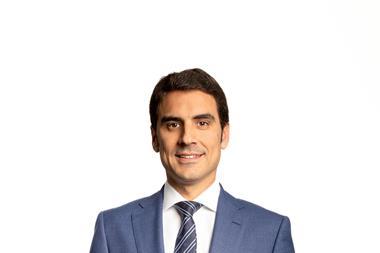DENMARK - DANISH pension funds say they would welcome to chance to invest in infrastructure projects which could be opened by the government for public-private partnerships (PPPs), ahead of a report from the Infrastructure Commission.
Due on Thursday, the commission's report is expected to recommend private investors should be included to a much greater degree in the financing of future infrastructure projects.
"We welcome the opportunity to invest in Danish infrastructure," said Jens-Christian Stougaard, pension fund secretary at labour-market fund PensionDanmark.
"We will know more about the opportunities when the Infrastructure Commission reports. But it's up to the politicians to decide in which form and which projects they would like the pension funds to participate in - if at all," he added.
PensionDanmark aims to have a 5% of its DKK70bn (€9.3bn) in assets under management in infrastructure, Stougaard said, but its total commitment to the asset class at present is DKK3bn, with DKK1.1bn already invested.
That said, all of its infrastructure investment is so far in projects outside Denmark, via funds, he said.
Outlining a possible investment model with pension funds buying the Danish part of the Øresund bridge or financing a bridge link to Germany, pension fund AP Pension declared itself open to such an opportunity.
"For AP Pension, an investment like this is high on our wish list," said Hans Boye Clausen, managing director. "We are always open to new investment opportunities, where the return is attractive in relation to the risk."
He continued: "If there is an opportunity in Danish infrastructure, we are very interested in injecting money into the project," he said. "But we find it hard to see how it would work, in order that both the state and pension funds could benefit from the project."
However, he pointed out the state has a significant surplus to its assets and is also able to lend money at 4%.
"It is hard to see how the pension funds, which have to give customers a return on their pension savings, would be satisfied with such a modest yield," he said.
In contrast, ATP's Gade Jepsen believes the efficiencies gained could make such investments profitable for both parties, and it would not end up being a ‘zero-sum' game.
"If you look at the experience in the Netherlands and the UK, public-private partnership projects have tended to be completed faster and more cheaply than pure public projects," he told IPE.
"Experience tells us these assets would be better maintained, so you could easily imagine investors turning this into a better investment opportunity," he said.
ATP's board has set a target asset allocation of 5% for infrastructure, which corresponds to DKK18-19bn, though Gade Jepsen said this allocation could be increased in the future in light of ATP's focus on inflation-protected assets.
Having already committed DKK6bn to foreign infrastructure investments, the fund currently has around DKK12bn it could theoretically invest in Danish infrastructure, he added.
And this could be combined with borrowing to finance up to DKK60bn of infrastructure projects in Denmark.
"If we bought only infrastructure assets with very stable cashflow returns, then we could probably leverage it up to about DKK60bn - so that is probably the maximum we could invest in Danish projects," he said.
Though she had not seen the Infrastructure Commission's findings, Danish Transport Minister Carina Christensen responded to talk of its forthcoming recommendations by stating: "Internationally, we already have the Great Belt and the Øresund (links) as PPP projects, and we have had extremely good experiences with those. It is possible that this is a model which can also be used in other contexts - for example, the Femern Belt connection."
The proposed fixed link across the Femern Belt would join Denmark and Germany.
If you have any comments you would like to add to this or any other story, contact Julie Henderson on + 44 (0)20 7261 4602 or email julie.henderson@ipe.com












